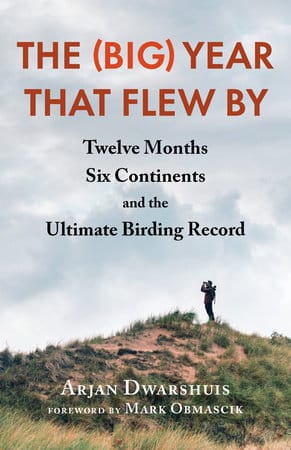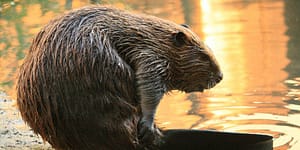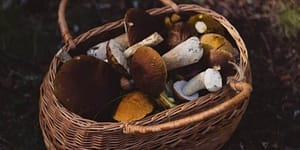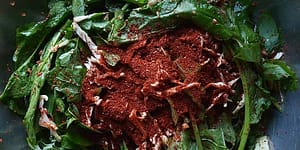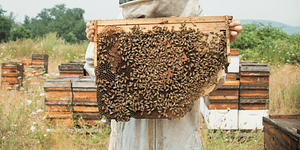An Endangered Scavenger: Searching for the California Condor

Toward the end of his Big Year, birder Arjan Dwarshuis stopped at Pinnacles National Park in California to hopefully sneak a peek at one of the most elusive and intriguing birds in existence: the California Condor.
This large and endangered bird is not only a marvel to look at, it is one of the largest flying birds in the world. When it soars, the wings spread more than nine feet from tip to tip. And has a rich and turbulent history that has helped it continue to live on in California today.
The following is an excerpt from The (Big) Year That Flew By by Arjan Dwarshuis. It has been adapted for the web.
Banner Photo Credit: Barbara Ash | Shutter Stock
In Search of the California Condor
I drive through a typical dry California hilly landscape to Pinnacles National Park. This is the habitat of the largest and most endangered bird in North America, the California Condor. I’m flying to Japan tomorrow morning, so this iconic scavenger might just be the last new species I see in the New World.
In the context of my fundraiser for the Preventing Extinctions Program it would be an appropriate species, because no other North American bird has had such a turbulent history of conservation as this one.

Photo Credit: Gavin Emmons/National Park Service
The California Condor is a giant black bird with a fierce-looking, bald, pale pink head and contrasting white underwing coverts. It has a wingspan of almost 10 feet and can weigh up to 22 pounds. The Andean Condor, which I saw earlier this year in Argentina, can grow even bigger and weigh up to 33 pounds.
Historically, the California Condor’s geographical distribution extended along almost the entire west coast of North America, from the north of Baja California in Mexico to the south of British Columbia in Canada. But by the late 1800s, this area had dwindled. Today, only about 600 of these birds are left. This decline had everything to do with the increase in human population. The condors were shot for their beautiful feathers, their eggs were collected, they fell prey to cyanide traps for coyotes, and they regularly crashed into electricity pylons and other human structures. But the vast majority died from lead poisoning.
The California Condor: An Endangered Scavenger
Condors are typical scavengers. They feed almost exclusively on the carcasses of large mammals. That is why they have a bald head. When they disappear, head and all, into the abdominal cavity of a dead animal, less rotting flesh and blood gets stuck in their feathers. They track down a meal with their exceptional eyesight, while they soar over the landscape at heights of up to 2.5 miles. Those carcasses used to come from animals that had died of natural causes, but that changed when Western settlers arrived in the eighteenth century.
One of the settlers’ favorite pastimes was hunting, mainly with lead bullets. When a shot animal managed to get away and eventually died, the bullet was still stuck in its body. When condors that feasted on the cadaver ingested that bullet, the lead was absorbed through their digestive tracts and they died horrific deaths.
The condor population plummeted. By the 1930s, condors no longer existed outside the state of California. In 1953 the state declared the California Condor an officially protected species, and fourteen years later it was assigned endangered species status by the US Fish and Wildlife Service. In the late 1980s, a number of areas were designated as special condor reservations. But it was all to no avail, as hunting with lead bullets still took place on a large scale.

Photo Credit: Gavin Emmons/National Park Service
In 1985 there were only nine birds left in the wild. At that point, it was decided to undertake the extreme and controversial measure to capture them all in an attempt to save the species and protect the gene pool. The last wild condor, the famous male AC9, was caught in April 1987. From then on, the species was officially extinct in the wild. There were only twenty-two California Condors in the world, and they all lived in captivity.
A Call to Action: Rebuilding the Condor Population
In the early 1980s, a large-scale breeding program was set up by the US Fish and Wildlife Service, with the participation of several well-known zoos, such as the San Diego Wild Animal Park and the Los Angeles Zoo. This was a huge challenge, because condors become sexually mature only after six years and raise at most one young every two years. But by removing the eggs shortly after laying, the birds were encouraged to lay another one.
Those precious eggs were incubated artificially, and the young were raised by hand, making use of a rubber, lifelike condor-head glove in order to prevent the young birds from getting used to humans. The breeding program was a success, and the population grew rapidly. In 1992 the first captive-reared condors were released into the wild. It wasn’t until 2002 that a condor was born in the wild again, the first time in eighteen years.
Now several hundred of these majestic birds are living in the wild. In spite of the fact that hunting with lead bullets is banned in California, it still takes place on a large scale. At this point, without the help of the breeding program, the species would still become extinct. This is perhaps the ultimate paradox: The condor cannot live with humans, but it can’t live without them now, either.
Face-to-Beak With the California Condor
Pinnacles National Park is characterized by impressive formations of orange rock that are situated in the middle of the park. The condors build their nests on inaccessible ledges along the steepest rock faces. After the reintroduction of the condor back into the wild, this nesting happened for the first time in 2016. The species has been breeding here regularly ever since.

Photo Credit: Barbara Ash | Shutter Stock
The birds are fitted with brightly colored plastic wing tags as well as GPS trackers, which allows researchers to recognize them individually from a great distance and to closely monitor their whereabouts online. It is also useful to trace dead birds and determine the cause of death. With every condor that can be proven to have died of lead poisoning, the argument against hunting with lead bullets gains weight.
My partner and I are in a parking lot at the bottom of the rock formations. We watch the sky closely, and my telescope is at the ready. We’ve already seen a number of Turkey Vultures, the much smaller cousin of the condor, but so far we haven’t found any trace of the king of California’s skies.
Suddenly a bird of prey appears on the horizon. He keeps his wings stiffly spread as he glides effortlessly on the thermals along the rock formation. It’s only when a Turkey Vulture flies next to him that his enormous size stands out: It’s as if a buzzard is flying next to a Bald Eagle. It is a California Condor, and its 10-foot wingspan casts a long black shadow on the rock wall. I get him in the scope straight away. As I admire the bird, it is joined by another condor.
Each has brightly colored wing tags and transmitters on its upper wings. It could very well be that they are a pair and that they are building a nest, because condors lay their eggs in early spring. We can follow them for minutes, until they disappear behind the rock formation. Then we get in the car and drive to Los Angeles. Tomorrow morning I will fly to Vietnam via Tokyo and Taiwan to start the finale of my Big Year.
Recommended Reads
Recent Articles
Beavers are ecological and hydrological Swiss Army knives. Capable of tackling just about any landscape-scale problem you might confront.
Read MoreWhen you’re walking around the grocery store looking at the vegetables, it’s probably hard to imagine that a century ago there was twice the amount of options.
Read MoreFor people who enjoy foraging for food in the wild, there are plenty of mushrooms to choose from — “ten thousand mushroom species to be considered on the North American continent alone”. But foraging for mushrooms should never be thought of as a game of chance. You need to know all the clues when it comes to identifying…
Read MoreNeed a new twist on kimchi? Look no further than this wild green kimchi! Experiment with what you have, anything from the mustard family will work extremely well.
Read MoreFor all the beekeepers and future beekeepers out there, this one is for you! Your journey to successful beekeeping begins with constructing a suitable haven for honeybees, otherwise known as the bee hive. The following is an excerpt from Raising Resilient Bees by Eric and Joy McEwen. It has been adapted for the web. Bees…
Read More
